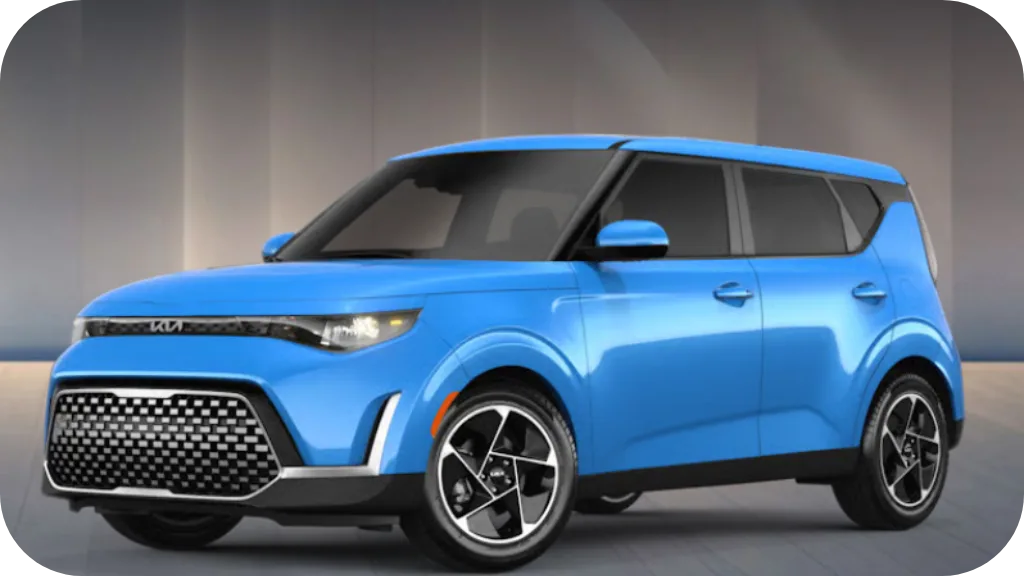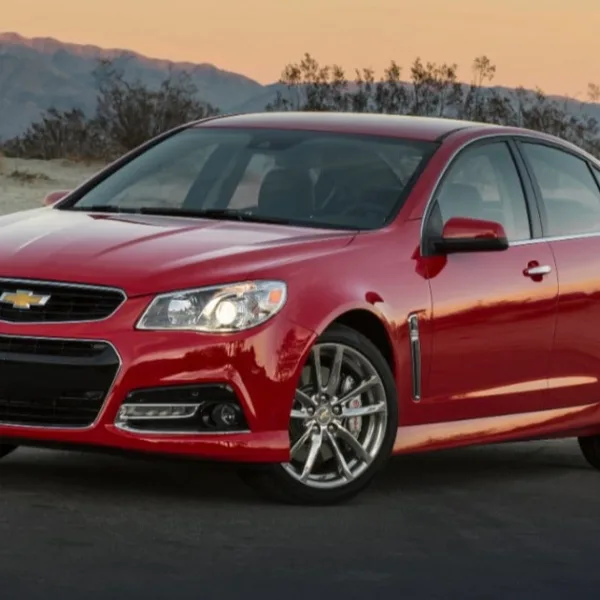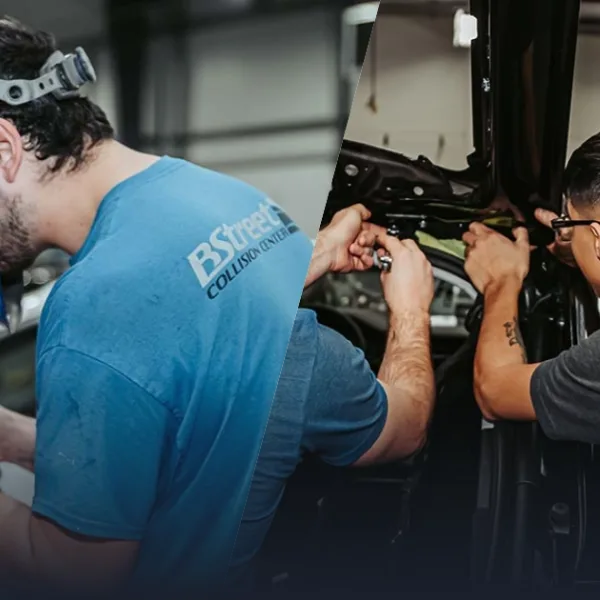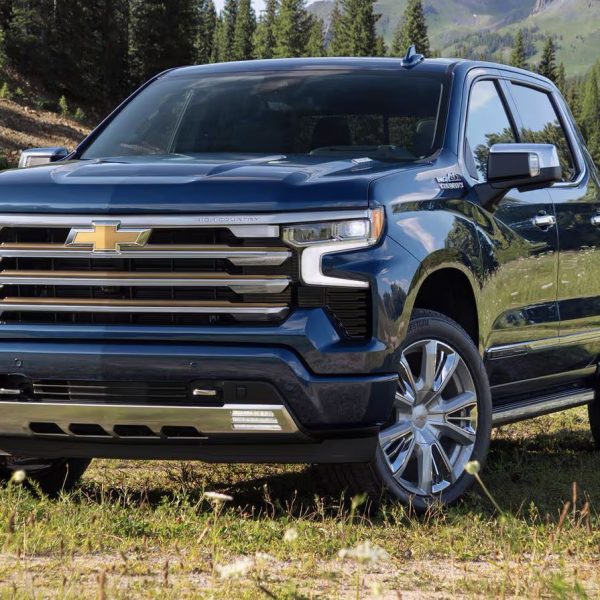In the Omaha, Nebraska area, drivers utilize a wide variety of trailers for recreation, work, and personal projects.
The region’s blend of urban, suburban, and agricultural environments means you’ll commonly see a diverse range of trailers on the road, pulled by vehicles specifically configured for the task at hand.
In this article we will guide you through different aspects of towing in the Midwest, particularly around the Omaha Metro, and hopefully help you become more confident in your vehicle selection and operation.
Table of Contents
Trailers You’ll See on Omaha Roads
The needs of drivers in and around Nebraska and Iowa are reflected in the variety of trailers they pull. These range from small personal trailers to large, heavy-duty equipment for commercial or agricultural use.
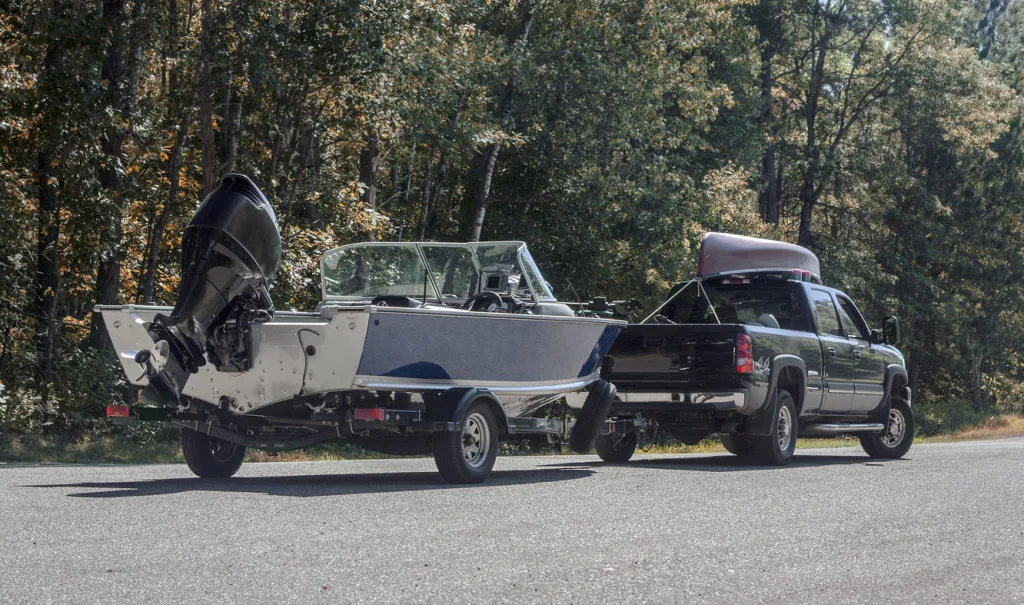
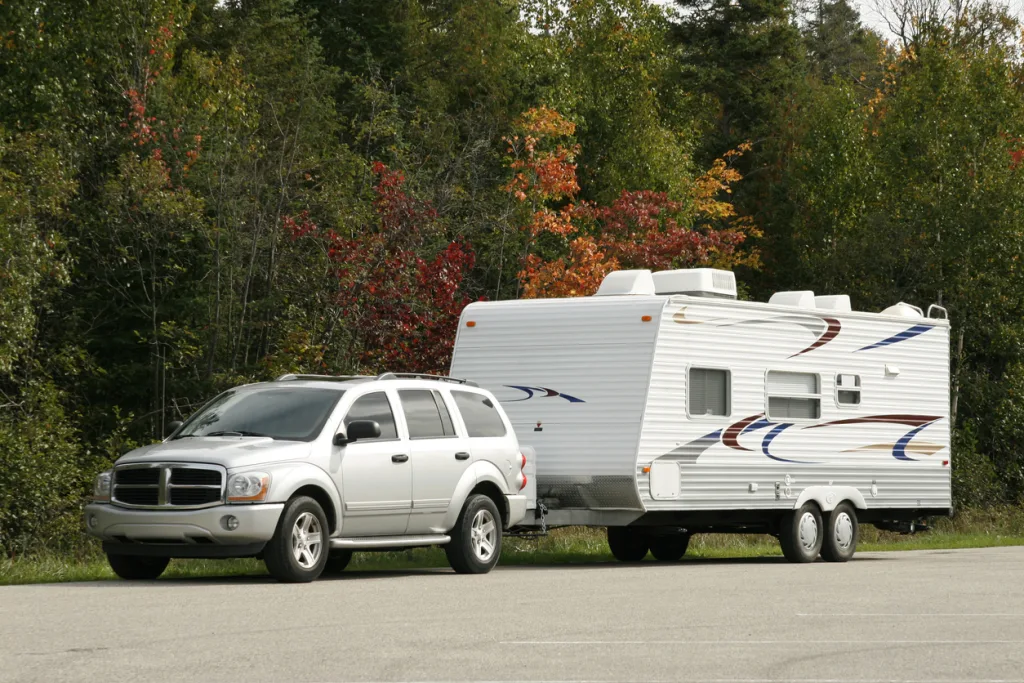
- Boat Trailer: Frequently seen heading to and from the Missouri River, state lake recreation areas, and other local waterways during boating season.
- RV (Recreational Vehicle) Travel Trailer & Toy Hauler: Popular for family vacations and outdoor excursions to nearby state parks and lakes.
- Motorcycle Trailer & Car Hauler: Used by enthusiasts to transport their vehicles to shows, races, or for relocation.
- Livestock Trailer (or Horse Trailer): A common sight in the rural areas surrounding Omaha, used for transporting animals for agricultural purposes or equestrian events.
- Flatbed Trailer & Equipment Trailer: Essential for agricultural use and construction projects, used to move small tractors, skid steers, and other heavy machinery.
- Enclosed Trailer & Utility Trailer: Versatile options for moving, hauling landscaping materials, or transporting tools and goods securely.
- Dump Trailer: A practical choice for significant landscaping, construction, or property clean-up projects.
- Pull/Tow Behind Vehicle: This refers to the practice of one vehicle towing another, such as an RV pulling a small car for local transportation once at a destination.
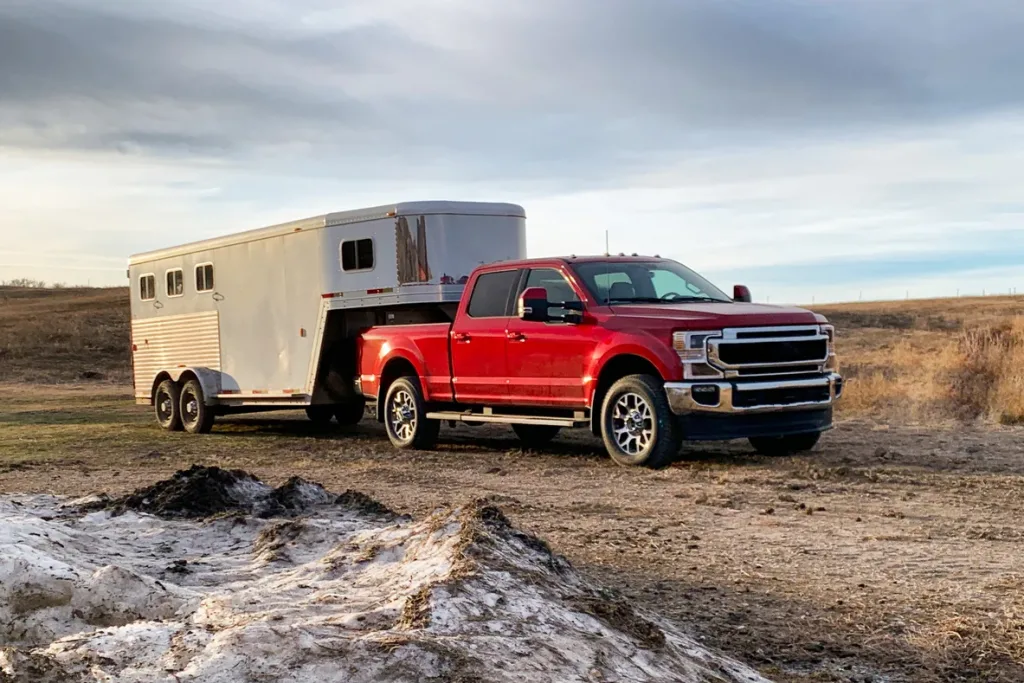
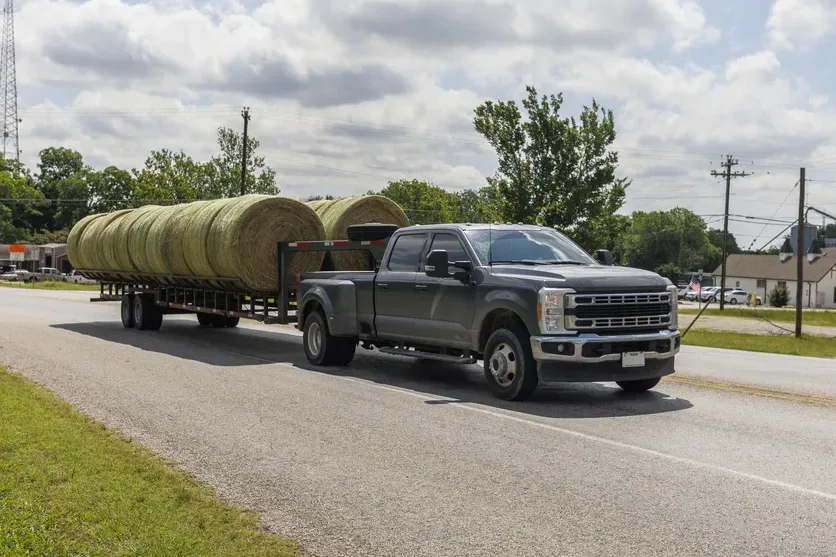
The Language of Towing: Key Terms You Need to Know
Knowing the difference between terms such as GCWR, GVWR, and payload capacity, is essential for any driver to ensure they do not exceed their vehicle’s safety limits. Properly matching the trailer’s tongue weight to the correct class and type of hitch—whether it’s a common receiver, a gooseneck, or a 5th wheel—is crucial for maintaining stability and control on the road.
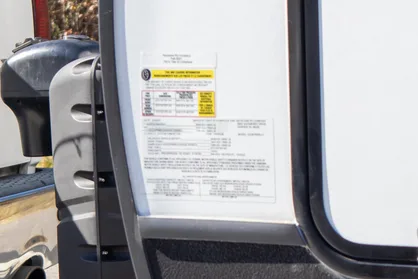
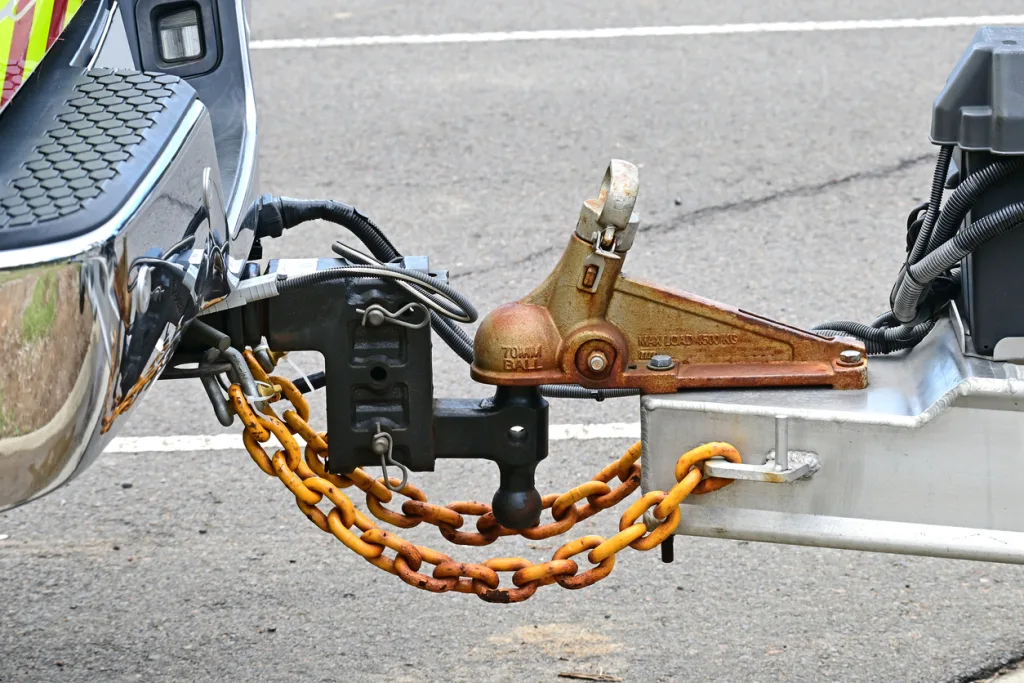
By respecting these manufacturer ratings and using the appropriate equipment, drivers can confidently and safely haul everything from family campers to heavy work equipment. If these terms seem unfamiliar, consider familiarizing yourself with more about this in our blog article Towing Definitions: An Intro to Towing for Omaha Drivers.
Find the Right Tow Vehicle for Your Needs in Omaha
For drivers around Omaha looking for a vehicle with towing capabilities, local dealerships like H+H Chevrolet, H+H Kia, and H+H Jeep Dodge Ram offer a spectrum of options across several classes.
Midsize SUVs
Midsize SUVs provide a balance of passenger space and utility, making them suitable for towing small- to medium-sized loads like boats, pop-up campers, and utility trailers.
- H+H Chevrolet: Models include the Chevrolet Traverse, Blazer, and Equinox.
- H+H Kia: The lineup features the Kia Telluride, Sorento, and Sportage.
- H+H Jeep Dodge Ram: Options include the Jeep Grand Cherokee and Dodge Durango.
Full Size SUVs
Full size SUVs provide even more passenger space and truck level towing capabilities. With proper equipment and configurations some of these vehicles can compete with half-ton trucks.
- H+H Chevrolet: Chevrolet Tahoe and Suburban are very popular choices for the towing capability of a truck mixed with a spacious interior.
- H+H Jeep Dodge Ram: Jeep Grand Cherokee L, Jeep Wagoneer, and Jeep Grand Wagoneer also offer more room and towing capacity in the SUV segment.
Midsize Trucks
Offering more capability than most midsize SUVs, midsize trucks are a great choice for those who need to tow smaller travel trailers or heavier utility loads without committing to a full-size truck.
- H+H Chevrolet: The Chevrolet Colorado is a popular midsize option with off-road capabilities.
- H+H Jeep Dodge Ram: The Jeep Gladiator provides off-road prowess with midsize truck towing ability.
“Half-Ton” Trucks
The “half-ton” pickup (e.g., 1500-series) is the most common type of truck, valued for its blend of daily driving comfort and significant towing and hauling prowess. Classically these are known as “half-ton” for their original payload capacity of a half-ton or 1,000 pounds, but are now capable of handling much more payload these days. 1500-series trucks can handle larger travel trailers, boats, car haulers, and mid-sized equipment trailers.
- H+H Chevrolet: Chevrolet offers the Silverado 1500 and Silverado EV.
- H+H Jeep Dodge Ram: Ram’s 1500, and the new 1500 Ramcharger and 1500 REV are also strong competition in this class.
“3/4-Ton” and “1-Ton” Trucks
For the most demanding towing jobs, heavy-duty trucks are the solution. “3/4-ton” (2500-series) and “1-ton” (3500-series) pickups are engineered with stronger frames, more powerful engines (including high-torque diesel options), and more robust suspensions to safely handle large boats, fifth-wheel RVs, gooseneck livestock trailers, and heavy construction equipment.
- H+H Chevrolet: The heavy-duty line includes the Chevrolet Silverado 2500HD and Silverado 3500HD.
- H+H Jeep Dodge Ram: For maximum capability from Ram, the Ram 2500 and Ram 3500 are available.
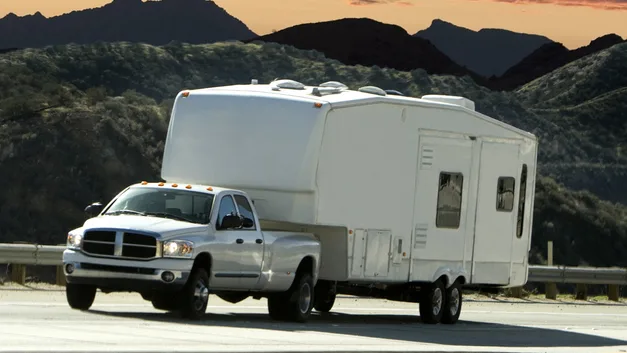
How Your Vehicle’s Setup Affects Towing Performance
A vehicle’s ability to tow effectively and safely is determined by a combination of its mechanical and structural components. How a vehicle is equipped can dramatically alter its towing capacity and stability.
- Axle Ratios: A higher numerical axle ratio (e.g., 4.10) multiplies engine torque more effectively, making it easier to pull heavy loads from a stop and on hills. A lower ratio (e.g., 3.55) is generally more fuel-efficient when not towing.
- Engines: The engine is the heart of a tow vehicle. Diesel engines are often preferred for heavy towing due to their high torque output at low RPMs. Modern gasoline engines, especially larger V8s and turbocharged V6s, are also very capable towers. Many new electric vehicles also provide surprising towing performance, such as the Chevrolet Silverado EV.
- Wheelbase (or Vehicle Length): A longer wheelbase—the distance from the front to the rear axle—provides a more stable towing platform, helping to mitigate trailer sway.
- Suspensions: Heavy-duty suspension systems are critical for managing the weight of a trailer. Upgraded springs and shocks prevent the rear of the vehicle from sagging, which maintains proper steering geometry and braking performance.
- Towing Packages: Many manufacturers offer factory-installed towing packages that equip a vehicle for towing. These typically include a trailer hitch receiver, upgraded engine and transmission cooling systems, pre-wired trailer connections, and often an integrated trailer brake controller.
Must-Have Gear for Safe and Easy Towing
A range of essential tools and vehicle features significantly enhances the safety and performance of vehicle towing for drivers around Omaha. Mechanical aids like weight distribution hitches and sway control bars create a more stable, balanced ride, while features such as tow/haul mode protect the vehicle’s transmission and improve control.
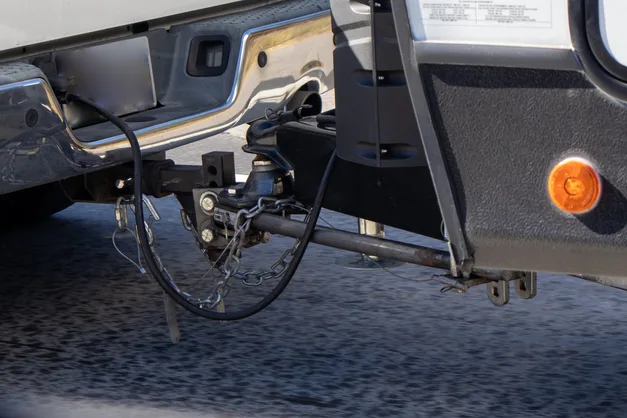
Additionally, modern technologies like specialized navigation apps and camera systems provide crucial assistance for safely routing and maneuvering with a trailer. More information about these tools can be found in our blog article Essential Towing Tools for Omaha Drivers.
Towing Safety Checklist: A Quick Guide
Successful towing requires understanding that a vehicle’s payload capacity, which includes passengers and trailer tongue weight, is often reached before its maximum towing capacity.
Proper trailer safety also involves loading the trailer with more weight towards the front to prevent dangerous swaying and completing a pre-departure checklist of tires, lights, and mirrors.
Lastly, drivers should use 4WD only in low-traction situations like wet boat ramps or snowy roads, drive at reduced speeds, and always be aware of the added weight and length of their setup to ensure a safe journey around Omaha. More in-depth towing safety tips can be found in our blog article Safety Tips for Towing a Trailer In and Around Omaha.
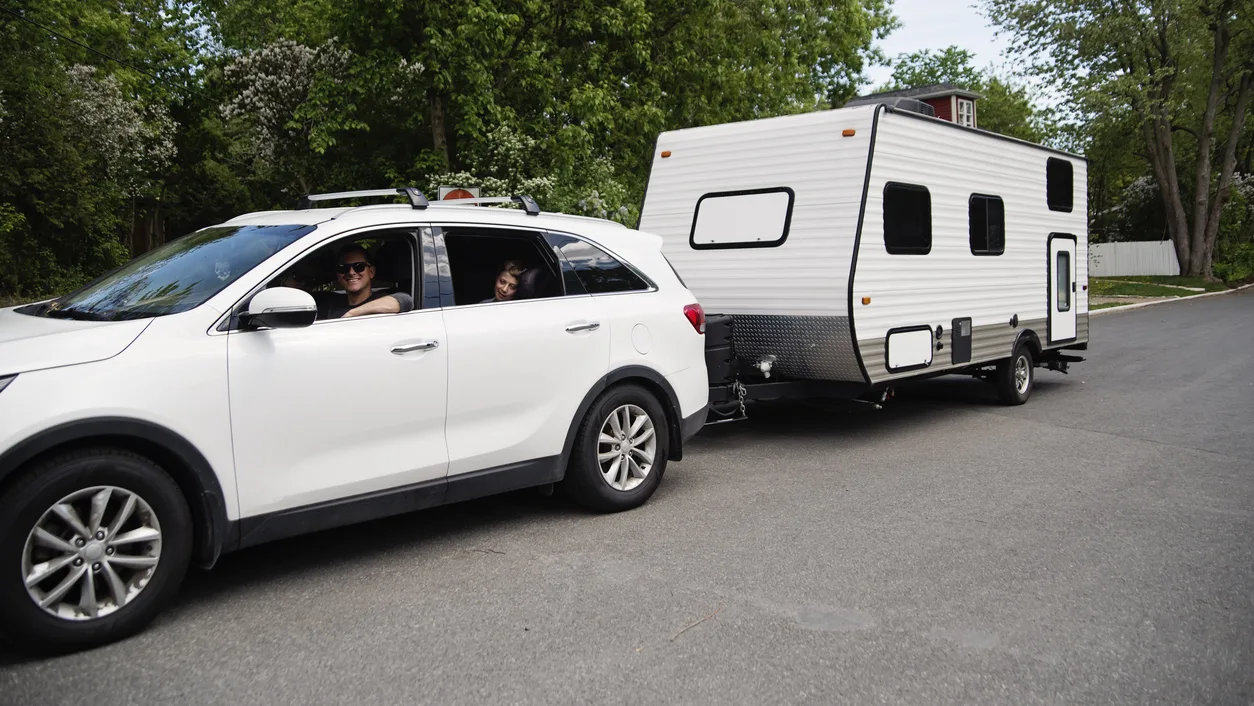
In summary, navigating the roads of Omaha and the surrounding Midwest with a trailer in tow requires a solid understanding of your equipment and vehicle. From hauling a boat to the nearby lake to transporting livestock in the rural expanses, the right vehicle and proper knowledge are paramount.
By familiarizing yourself with critical terms like GVWR and payload, selecting a suitably equipped SUV or truck from local dealerships like H+H Chevrolet, H+H Kia, and H+H Jeep Dodge Ram, and utilizing essential tools and safety practices, you can ensure a secure and confident towing experience. Ultimately, a successful journey is one where you are well-prepared, your load is secure, and you arrive safely at your destination, ready for work or recreation.


